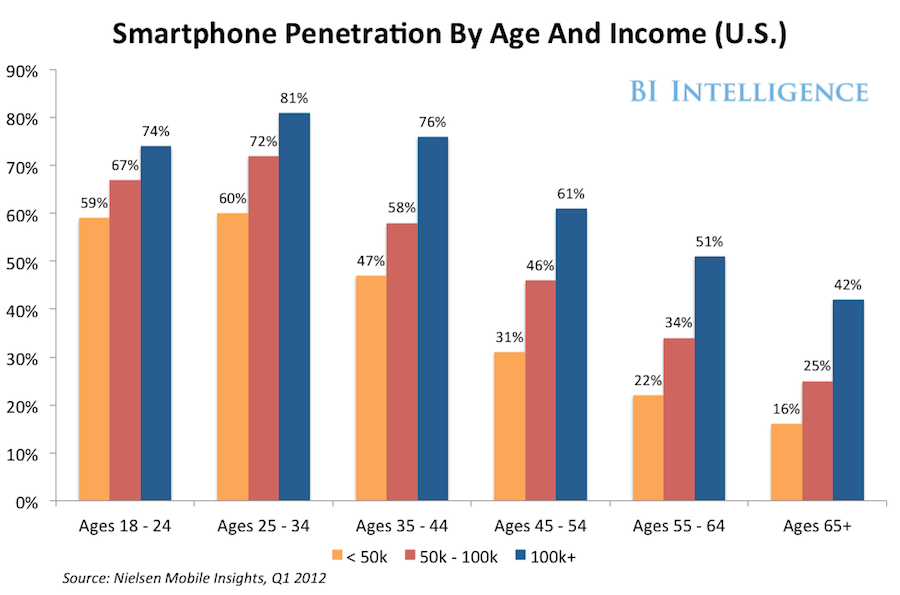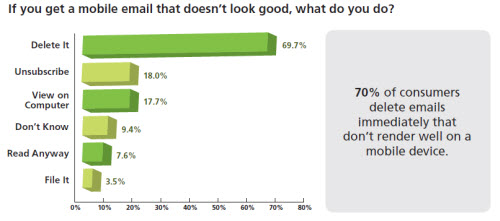Mobile handset activity by minutes on the internet has grown 125% in a year. Smartphones…
That Email Newsletter You’re Sending Is Being Read On Someone’s Smartphone
18.
This Says It All
26.
That Email Newsletter You’re Sending Is Being Read On Someone’s Smartphone
If you are sending newsletters to your contacts’ inboxes, chances are you are reaching their mobile device. The upswing in smartphone usage over the last 24 months has resulted in an explosion of mobile users accessing their email primarily, or at least initially, on their mobile device.
Recent research by Business Insider confirms that the United States has exceeded 50% penetration by smartphones. Comscore reported in 2012 that, of the 250 million Americans over the age of 14, 235 million are mobile device users. The vast majority of US residents between the ages of 18 and 54 already have smartphones. The higher the income range, the more likely they have and use a smartphone, as this chart from Neilsen clearly shows.
Why is this meaningful for your email newsletter?
Eight out of ten mobile users turn to their smartphone for reading email, a higher percentage than those who used it for making calls, notes Adobe in the “2013 Digital Publishing Report: Retail Apps & Buying Habits.” Most (90%) access the same email account on mobile and desktop, says ExactTarget’s “The 2012 channel preference survey.” (free subscription required) In fact, more email is read on a mobile device than on a desktop email client or via an online mail system. Statistics in Litmus’s ”Email Analytics” blog say 43% of email is now opened on a mobile device. More tellingly, a June 2012 study from Prosper Mobile Insights showed that 51.1% of US smartphone or tablet owners viewed email only on these devices (emphasis added). Meaning, at a minimum, one quarter of your audience (especially the younger, more affluent ones) will never see your newsletter in a conventional desktop inbox.
Does it matter if your newsletter isn’t optimized for the mobile user? It’s crucial. Seventy-two percent (72%) of mobile users tested in a recent study read their emails in bed. These device owners use their phones as an alarm clock, and as soon as they turn off the alarm, they hit the email icon. Many readers haven’t even turned on the lights yet and are still snuggled under covers while reading your emails.
An unattractive email newsletter is a dead email newsletter. Seventy percent (70%) of recipients delete emails that don’t render well on their mobile device immediately. Look at these figures from the Blue Hornet research study.
That same study cites 75.4% of recipients reporting that receiving an email that looks bad reflects poorly on their perception of the brand. So, if you want to retain your readers and ensure that what you deliver to their inbox is doing your firm some good, your message MUST look good on the mobile device.
What are you doing to to make sure your emails are looking good and properly communicating your brand message with the increasing use of mobile devices? Comments welcome.


